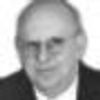
The Metropolitan Transportation Authority's buses handle more than 2.6 million passenger trips each day, yet a recent comparative analysis reveals that there's a lot of room for improvement in the efficiency of the MTA's bus operations. It also suggests where that improvement is needed.
The analysis, conducted by the Citizens Budget Commission, looked at the 10 largest public bus systems in the United States. The MTA has two of them: the New York City Transit (NYCT) bus operations, which provide local street bus service in all five boroughs, and the MTA Bus Company, which operates primarily limited-stop and express bus service.
Ranked by daily passenger trips, the NYCT bus system is the largest in the nation, followed by Los Angeles (2), Chicago (3), Philadelphia (4), New Jersey Transit (5), Washington, DC (6), MTA Bus (7), Boston (8), Seattle (9), and Miami-Dade (10). NYCT Bus has more than twice as many daily passenger trips as Los Angeles (2.3 million vs. 1.1 million); Chicago has 873,000, while the others are all below 500,000.
In terms of cost efficiency, the MTA's two bus systems perform poorly. The systems rank seventh or below for four of the five unit cost measures (cost per mile of service, hour of service, passenger mile, and active vehicle). With respect to the fifth indicator, cost per passenger trip, the MTA Bus Company is seventh, but NYCT Bus ranks third (behind Chicago and Los Angeles).
Similarly, the two MTA bus systems are among the highest-cost operations for each type of expense: vehicle operations, non-vehicle operations, vehicle maintenance, and general administration. The sole anomaly is the high ranking (between first and third) of the MTA Bus Company for non-vehicle operations, which is a relatively small cost component for most bus transit operators.
Labor productivity indicators also point to poor performance by the two MTA systems. In all three productivity measures (hours of service per employee hour, hours of service per vehicle operator hour, and miles of service per maintenance employee hour), the MTA systems rank as the bottom two. Maintenance productivity was particularly weak with both MTA systems performing at less than half the national median.
The relative inefficiency of the two MTA bus services is sometimes attributed to two factors -- poor road conditions, causing greater maintenance needs, and traffic congestion, causing slower and more expensive operations. Comparative data on road conditions are not readily available, so this remains a plausible (if perhaps only partial) explanation. With respect to congestion, the available data point to more severe conditions in New York than elsewhere. Only three bus systems operated at less than 10 miles per hour -- NYCT Bus (7.7), MTA Bus (8.6), and Chicago Transit (9.8). The median speed for all 10 systems was 10.7. This slower average speed may help explain the lack of efficiency in cost per mile of service or cost per passenger mile for the MTA bus systems, but it does not explain the MTA's relative inefficiency in cost per hour of service.
Comparative analysis is an effective and revealing tool. The full analysis, titled "Benchmarking Efficiency for the Metropolitan Transportation Authority's Services," is contained in a report that is available at www.cbcny.org. It examines the entire MTA mass transit system and includes subway and commuter railroads as well as more detailed data on the bus systems.
The analysis makes clear the relative inefficiency of the two MTA-operated bus systems, and it identifies the important directions for improvement. That's a map that the MTA should follow.
The author is Executive Vice President and Research Director at the Citizens Budget Commission and a Professor at NYU's Wagner School.
